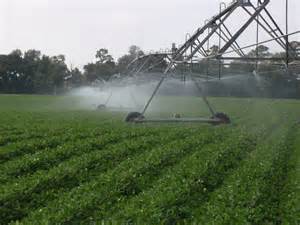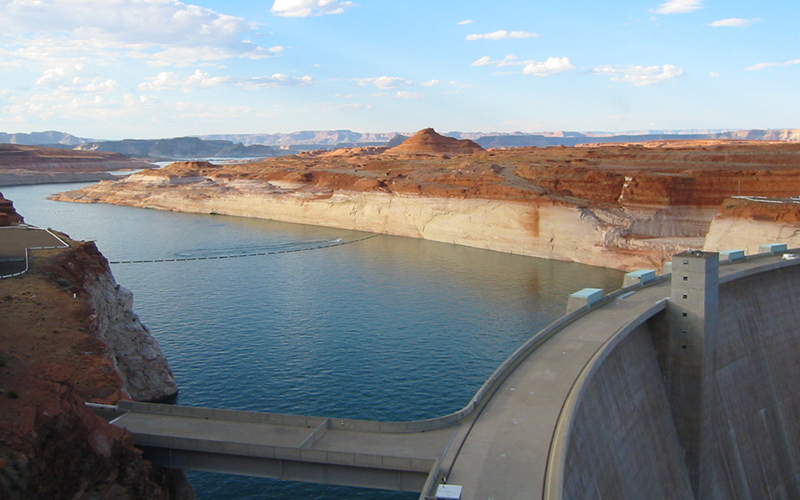We stated in the last article that we have plenty of water on our planet; we just do not manage it well. So, what are some ways to do this? Below we will review some ideas provided by Miller and Spoolman back in 2011 and we will add a few more.
Is Extracting More Groundwater the Answer?
Groundwater that is used to supply cities and grow food is being pumped from aquifers in some areas faster than it is renewed by precipitation. Some advantages of this method include the water is useful for drinking and irrigation, its available year-round, and there is no evaporation loss. The disadvantages include it is being depleted, sinking of land (subsidence) occurs from over pumping, some aquifers have been polluted by deep well injection of waste. The largest aquifer in the world is the Ogallala Aquifer found beneath South Dakota, Wyoming, Nebraska, Colorado, Kansas, New Mexico, Oklahoma, and Texas. It is showing signs of severe overdraft particularly near Texas and New Mexico. Methods of managing this water source would include wasting less water, restricting the number of wells allowed, planting crops and landscapes that require less water.
Is Building More Dams the Answer?
Building dam and reservoir systems has greatly increased water supplies in some areas, but it has disrupted ecosystems (causing other financial losses) and displaced people. Some positive aspects of creating reservoirs are creating a large source of water, recreational uses in these new lakes, and the dams produce low-cost electricity. But the negatives include the new lakes that flood cropland and displace people, evaporation loss of this needed resource is very high, disrupts the migration and spawning of many species of fish (some of which are economically valuable). With some current dam systems, the rivers are running dry downstream, and the lakes are shrinking. We saw this firsthand at the Glen Canyon Dam on the Colorado River in Arizona.
Is Transferring Water from One Place to Another the Answer?
Transferring water from one place to another has greatly increased supplies in some areas, but it has also disrupted ecosystems and commercial ventures in others. One place this has been used is the California Water Project – where water from wooded northern California has been piped to the deserts of southern California. For decades battles have been fought as to how much of this water should be sent south. Southern California uses this water in large agriculture projects and for large cities like Los Angeles and San Diego. 75% of this water is used in agriculture – but often for water thirsty crops like rice and alfalfa being grown in desert conditions. Northern California contends that these water transfers reduce the ability to flush pollutants from San Fransico Bay and has reduced important fisheries. They argue that southern California could help by using better irrigation methods and crop selection. Several studies suggest that climate change will reduce the amount of water currently available in this system and they are already over pumping their ground water. In 2011 China was planning a similar project moving water from southern part of the country to the north. But will this solve our water management problems?
Is Desalination of Seawater the Answer?
There is certainly plenty of seawater – and we know how to convert seawater to freshwater – but the cost is high, and the resulting salty brine must be disposed of without harming aquatic or terrestrial ecosystems. In 2004 there were about 15,000 desalination plants around the world – that number has not increased much over the last 20 years. Most were in the Middle East. Saudi Arabia had the largest number, followed by the U.S. Almost 50% of Isarel’s water was produced from desalination. In addition to high cost and issues with what to do with the brine produced, there is the problem of adding chemicals to this water as it is being piped to reduce algae. This chemical treatment has been shown to cause severe problems for natural ecosystems.
So, How Can We Use Water More Sustainably?
We can do so by reducing water waste, raising the price of water, slowing population growth, and protecting our aquifers and habitats that store and release water.
We can reduce irrigation waste by…
- Line irrigation canals
- Irrigate at night to reduce evaporation
- Monitor soil and irrigate only when needed
- Avoid growing water thirsty crops
- Irrigate with treated urban wastewater.
We can reduce water waste by…
- Redesign manufacturing systems so they use less water
- Recycle industrial water
- Landscape our yards with plants that require little or no water
- Use drip irrigation
- Raise water prices
- Use water saving toilets, showerheads, and front-loading clothes washers
- Collect and reuse household water for irrigation of nonedible plants.
How Can We Reduce the Threat of Flooding?
We can lessen the threat of flooding by protecting more wetlands and natural vegetation in watersheds and not building in areas subject to frequent flooding. You may have noticed with the recent building trends in the Florida panhandle, this is not being considered – but should.
Other ideas in conserving and reducing problems with water management include green roofs and Florida Friendly Landscaping. You can learn more about how to protect your water resources by visiting your local county extension office.
Reference
Miller, G.T., Spoolman, S.E. 2011. Living in the Environment. Brooks/Cole Cengage Learning. Belmont CA. pp. 674.
- Rattlesnakes on Our Barrier Islands; Part 4 – Thermoregulation - December 29, 2025
- Rattlesnakes on Our Barrier Islands; Part 3 – Envenomation - December 22, 2025
- St. Joe Red Tide Claiming Terrapins - December 15, 2025


